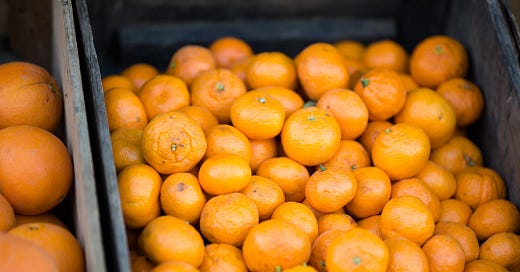“Knock knock.”
“Who’s there?”
“Orange!”
“Orange, who?”
“Orange you glad I didn’t say banana?!”
For whatever reason, the idea that humans need to eat nutrient-rich, whole, fresh, delicious foods in order to feel healthy and happy is a hard sell in America.
Maybe because of the relentless advertising, courtesy of multi-billion dollar processed food companies li…
Keep reading with a 7-day free trial
Subscribe to Vibrant Life to keep reading this post and get 7 days of free access to the full post archives.



